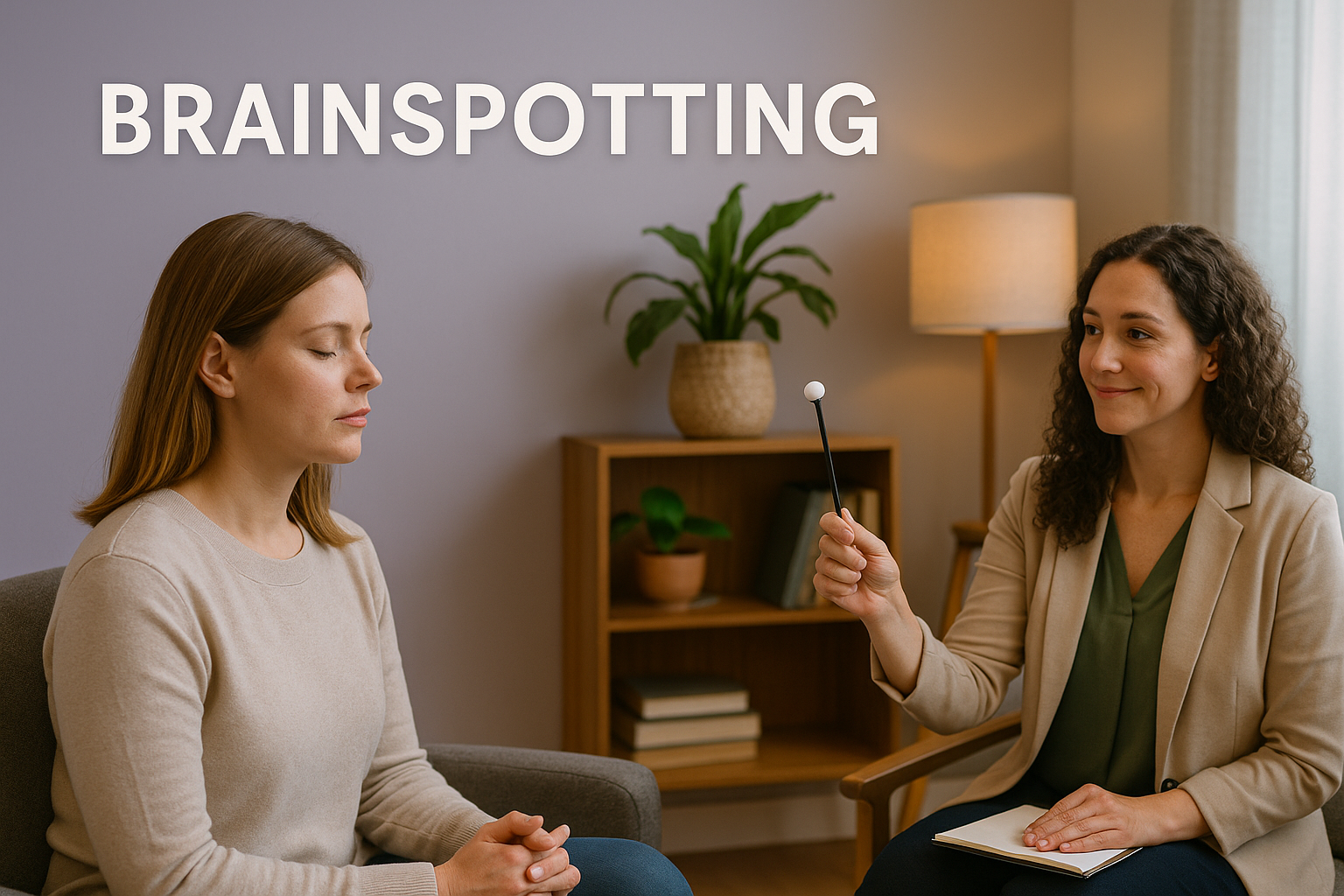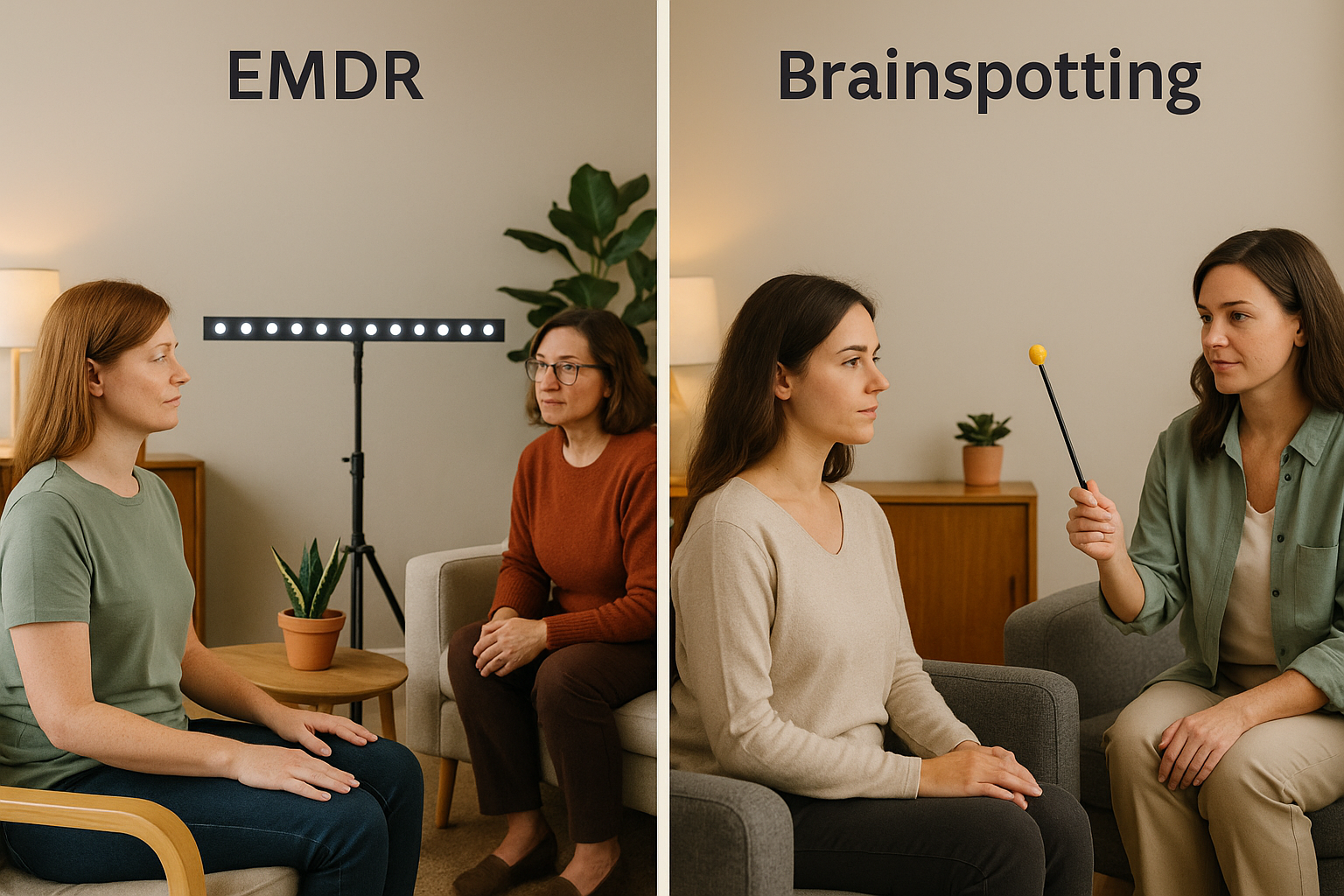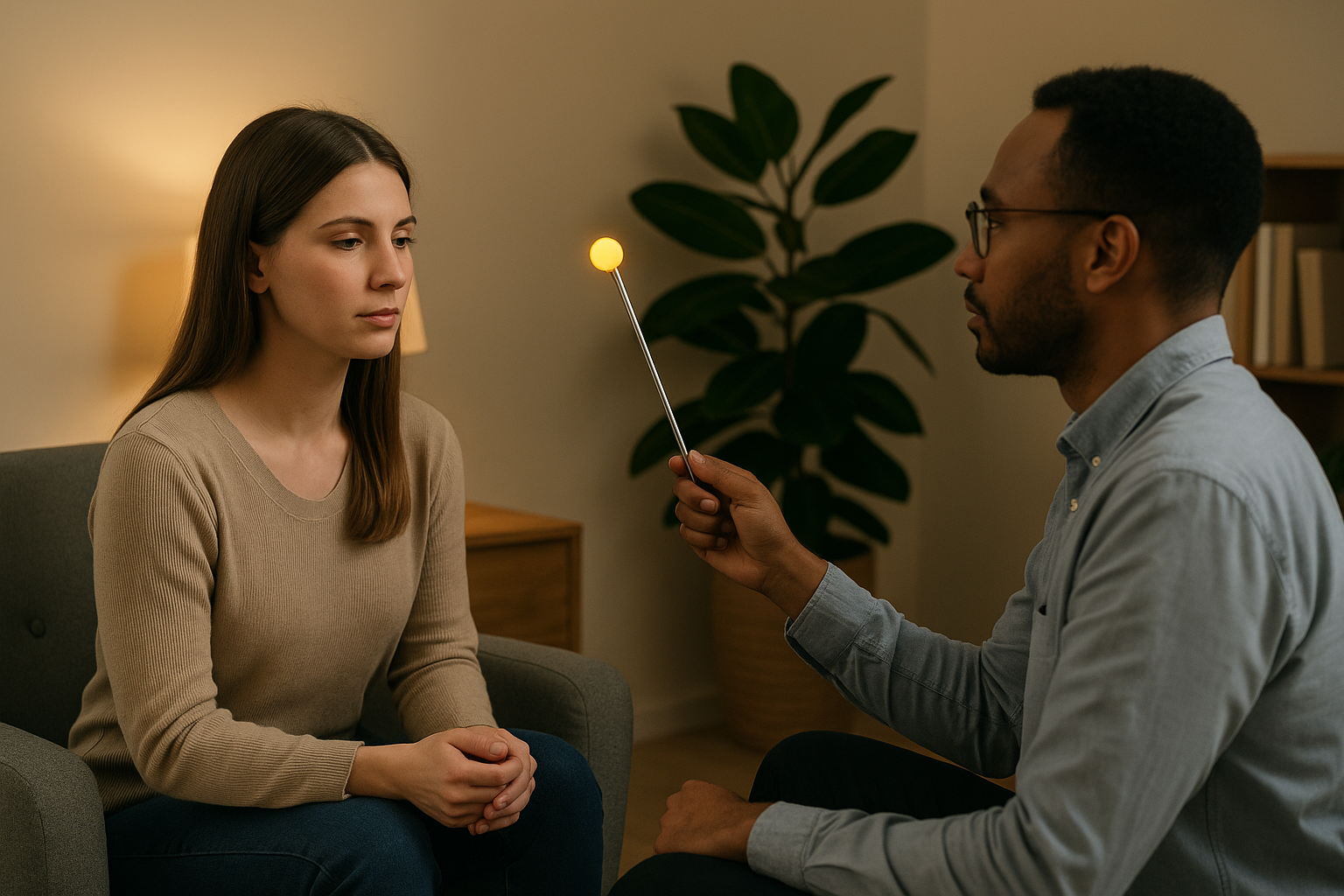What Is Brainspotting?
A Therapy for Trauma, Anxiety, and Stress
If you’ve ever felt “stuck” in patterns of fear, sadness, or stress - even when you understand them logically - you’re not alone. Sometimes overwhelming experiences don’t fully process in the mind. Instead, they can get stored in the body, showing up later as anxiety, tension, or emotional triggers.
Brainspotting therapy is a powerful way to access and release those stuck places, helping the brain and body heal at a deeper level.
What Is Brainspotting?
Brainspotting (BSP) is a therapeutic approach developed by Dr. David Grand in 2003. It is based on the principle that “where you look affects how you feel.”
In a session, a therapist helps you find a brainspot - an eye position connected to a memory, emotion, or physical sensation. By holding your gaze in that position, your brain naturally begins to process unresolved trauma and stress.
Unlike talk therapy, which mainly works with conscious thought, brainspotting reaches the deeper brain regions (such as the limbic system and brainstem) where trauma is often stored. This makes it possible to heal without having to re-live every detail of painful experiences.
What Can Brainspotting Help With?
Brainspotting can be used to address a wide range of challenges, including:
Trauma and PTSD (both major events and smaller, ongoing stressors)
Anxiety and panic attacks
Depression and emotional numbness
Grief and loss
Chronic pain and body tension
Stress and burnout
Performance anxiety (sports, public speaking, creative work)
Relationship difficulties
Interested in Trying Brainspotting?
Why Brainspotting Is Helpful
People often turn to brainspotting when they feel stuck or when traditional therapy hasn’t brought enough relief. Benefits include:
Deeper healing: Addresses the root causes, not just the symptoms.
Gentle and client-led: You stay in control and move at your own pace.
Body-based approach: Helps release trauma stored physically in the body.
Versatility: Can be integrated with other approaches, including mindfulness and holistic therapy.
Lasting results: Many clients notice significant, lasting change, sometimes in fewer sessions than talk therapy.
What to Expect in a Brainspotting Session
Each session is unique, but here’s what usually happens:
You share an issue or goal you’d like to focus on.
Your therapist helps you identify a brainspot through natural eye positions.
You hold your gaze there, allowing emotions and body sensations to process.
Your therapist supports and guides you, keeping the experience safe and grounded.
Many people describe sessions as subtle but powerful - like gently untangling emotional knots.
Brainspotting vs. EMDR
A common question is: Is brainspotting the same as EMDR?
Both are trauma therapies that use eye positions.
EMDR involves structured eye movements and bilateral stimulation.
Brainspotting is more flexible, client-led, and focused on the body’s natural healing process.
Both approaches can be highly effective, and the best fit depends on your personal needs and comfort.
Frequently Asked Questions About Brainspotting
How many brainspotting sessions will I need?
It varies. Some people notice relief after just a few sessions, while others use it longer for deeper healing.
Do I have to talk about my trauma?
No. You don’t have to share every detail of painful memories. Brainspotting allows your brain and body to process without forcing you to re-live experiences.
Can brainspotting help with anxiety or stress if I haven’t had trauma?
Yes. Many clients use it to reduce stress, overcome performance blocks, and manage everyday anxiety.
Final Thoughts
Brainspotting therapy is a gentle, effective way to heal unresolved trauma, reduce stress, and unlock potential. By working with both the mind and body, it helps you release what no longer serves you and move forward with greater clarity and ease.
👉 If you’re curious about how brainspotting could help you, consider reaching out to explore whether it’s the right fit for you.






